Ep25. Table of jazz legends notable accomplishments
Revision as of 18:41, 5 January 2023 by Dr.davidcring (Talk | contribs) (→Table of jazz legend's notable accomplishments)
Discussion[edit]
Table of jazz legend's notable accomplishments[edit]
| Name | Instrument & Roles | Style | Active years | Greatest achievements |
|---|---|---|---|---|
| (1877–1931) 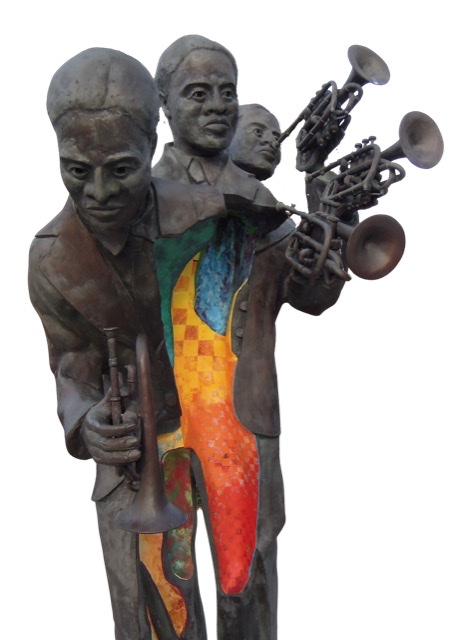 |
|
Old School jazz pioneer | 1900/1907 | Pioneer in Ragtime and Jazz/loud/skilled improviser/impressed younger musicians[2] |
| (1890–1941) 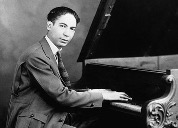 |
piano/bandleader/composer/minstrel shows | Progressive ragtime/Stomp | 1904/1940 | Pivotal figure in early jazz/first jazz arranger/jazz promotion/hustling/over 100 compositions |
| (1901–1971) 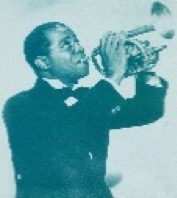 |
cornet/trumpet/composer/singer/actor | Old School/Dixieland | 1920/1970 | Improvised solo/world entertainer/America's 1st jazz ambassador/strong vocalist[4] /1949 cover of Time magazine 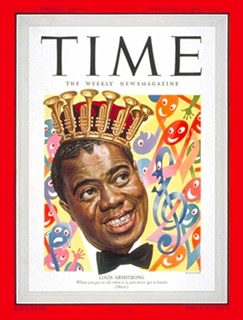 /Inducted into the Rhythm & Blues Hall of Fame 2017 as a 20th Century Early Music Influence/50 year career /Inducted into the Rhythm & Blues Hall of Fame 2017 as a 20th Century Early Music Influence/50 year career
|
| (1897–1959) 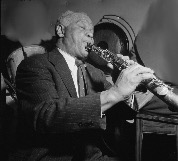 |
Primarily clarinet/soprano saxophone/tenor saxophone/piano/double bass/drums | Dixieland | 1920/1958 | master of improvisation (both individual and collective) with wide vibrato/dominating sound/Jazz internationalization |
| (1899–1974)  |
piano/composer/big band conductor | Big band Swing | 1930/1967 | Compositions/sophisticated elegance/tailoring music to soloists/most recorded jazz composer[5]/1956 Time magazine cover 
|
| (1916–1942)  |
electric guitar | Bebop pioneer | 1934/1942 | Developed bebop/paved way for electric guitar/creative melodic improviser/twice (1940 & 1941) Metronome All Stars member |
| (1904–1969)  |
tenor saxophone | Swing/big bands/played with beboppers | 1921/1965 | Influential solo on "Body and Soul"/mentor to many, including Thelonious Monk/promoted tenor sax/encyclopedic knowledge of chords and harmonies/harmonically advanced style[6] |
| (1909–1959) 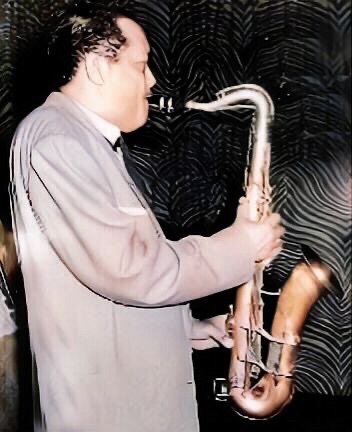 |
alto saxophone/clarinet | Big band swing | 1940/1967 | Light airy unforced sound/excellent use of the blues |
| (1904–1984)  |
piano/big band conductor/combos | Big band swing Kansas City style | 1938/1965 | Distinctively bright tinkling piano style |
| (1920–1955)  |
alto saxophone | Big bands/bebop/combos | 1942/1953 | Developed Bebop/enlarged harmonic pallet [7]/Effortless improvisations |
| (1917–1993)  |
trumpet/big band conductor/combos | Bebop/Afro-cuban jazz | 1940/1991 | Developed Bebop/Influenced players[8]/International jazz promoter |
| (1917–1982) 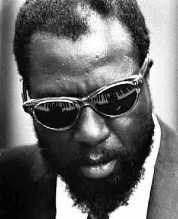 |
piano/bandleader/composer | Stride[9]/Bebop/Monkisms[10] | 1940/1970 | Developed bebop/composed jazz standards/idiosyncratic style in fashion & music/1964 cover of Time magazine  [11] [11]
|
| (1924–2007)  |
drums | Bebop/hard bop/free jazz | 1940/2004 | Pioneered Bebop]/Developed new musical timekeeping on "ride" cymbal instead of bass drum/Civil Rights movement composer/sought new forms of musical expression |
| (1926–1991) 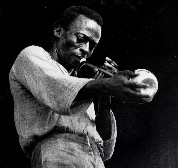 |
trumpet/electrified trumpet/bandleader/composer | Bebop/hard bop/cool/modal/jazz-rock fusion | 1946/1991 | Cool persona and dresser[12]/Stylist innovator/At the forefront of bebop, hard-bop, orchestral jazz, modal jazz, jazz-rock fusion and techno-funk |
NOTES[edit]
- ↑ See for examples: "Essential Solos: 40 Great Improvisations: (100) Jazz artists and critics pick their favorite solos from the music's past and present," Jazz Times, published November 2, 2017.
- ↑ Wikipedia: Buddy Bolden confirms his greatest achievements under the sub-heading "Musical career and early decline":
“ . . . known as King Bolden (see Jazz royalty), and his band was popular in New Orleans (the city of his birth) from about 1900 until 1907, when he was incapacitated by schizophrenia (then called dementia praecox). Bolden was known for his loud sound and improvisation. He made a big impression on younger musicians.” - ↑ See these further biographies and discographies:
* Ferdinand "Jelly Roll Morton" Lamothe
* Doctor Jazz's Jelly Roll Morton website
* Doctor Jazz's Jelly Roll late news and references - ↑ See the only known footage of Armstrong recording at Time magazine's Rare footage of Armstrong in recording studio.
- ↑ According to Jazz by Gary Giddins and Scott Deveaux, New York: W.W. Norton, 2009. (ISBN 978-0-393-06861-0), Ellington compositions are the most recorded in jazz history.
- ↑ Scott Yanow's Coleman Hawkins biography.
- ↑ As said at Mark Warner's FERMENTATION: The Daily Wine Blog: “(Parker) gave to the emerging Be-Bop artists a new harmonic paradigm that filled in the sound that progressive jazz artists were exploring as they moved away from the swing genre. Parker's great innovation was his discovery, out of his own imagination, of how to play any note and resolve it in the chord so that it would sound harmonically right.”
- ↑ Wikipedia: Dizzy Gillespie reports that Gillespie taught and influenced trumpeters Miles Davis, Jon Faddis, Fats Navarro, Clifford Brown, Arturo Sandoval, Lee Morgan, Chuck Mangione, and balladeer Johnny Hartman.
- ↑ Wikipedia: Thelonious Monk describes Monk's early playing career, “as "hard-swinging," with the addition of runs in the style of Art Tatum. Monk's stated influences included Duke Ellington, James P. Johnson, and other early stride pianists.”
- ↑ Wikipedia: Thelonious Monk describes Monk's singular style: “Monk's compositions and improvisations feature dissonances and angular melodic twists and are consistent with his unorthodox approach to the piano, which combined a highly percussive attack with abrupt, dramatic use of switched key releases, silences, and hesitations.” (bold not in original)
- ↑ "Jazz: The Loneliest Monk," Time magazine, Friday, Feb. 28, 1964.
- ↑ The Guardian newspaper reports that “Davis was the best-dressed man of the 20th century. Starting out, he'd customise his pawnshop Brooks Brothers suits, cutting notches in the lapels in imitation of the Duke of Windsor. After 1949's Birth of the Cool, he favoured the Ivy League look of European tailoring. In the 60s he went for slim-cut Italian suits and handmade doeskin loafers. He was always the coolest-looking man in the room.